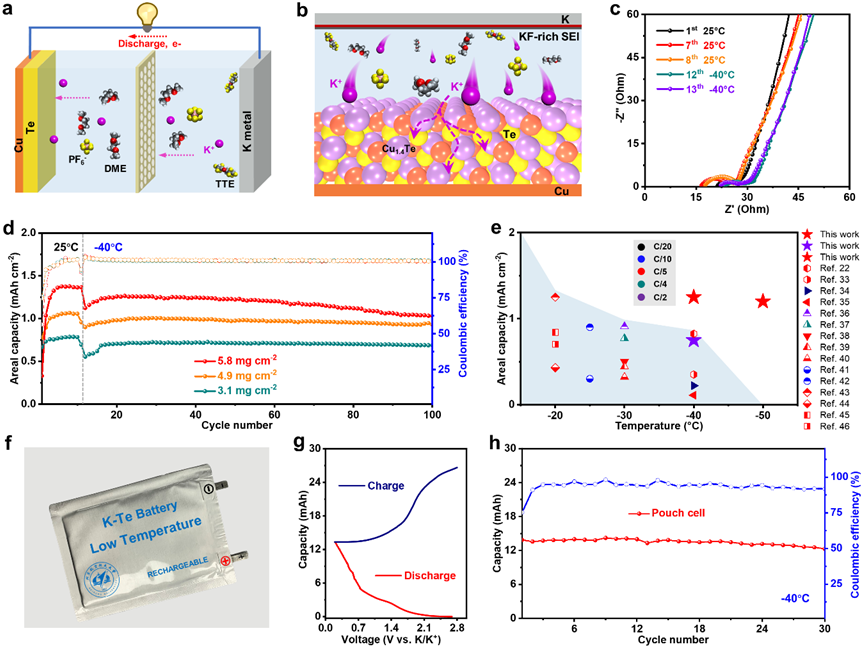High mass loading and high areal capacity are key metrics for commercial batteries, which are usually limited by the large charge-transfer impedance in thick electrodes. This can be kinetically deteriorated under low temperatures, and the realization of high-areal-capacity batteries in cold climates remains challenging. Herein, a low-temperature high-areal-capacity rechargeable potassium–tellurium (K–Te) battery is successfully fabricated by knocking down the kinetic barriers in the cathode and pairing it with stable anode. Specifically, the in situ electrochemical self-reconstruction of amorphous Cu1.4Te in a thick electrode is realized simply by coating micro-sized Te on the Cu collector, significantly improving its ionic conductivity. Meanwhile, the optimized electrolyte enables fast ion transportation and a stable K-metal anode at a large current density and areal capacity. Consequently, this K–Te battery achieves a high areal capacity of 1.25 mAh cm−2 at −40 °C, which greatly exceeds those of most reported works. This work highlights the significance of electrode design and electrolyte engineering for high areal capacity at low temperatures, and represents a critical step toward practical applications of low-temperature batteries.

Jiangchun Chen, Dandan Yu, Qiaonan Zhu, Xiaozhi Liu, Jiawei Wang, Wenxing Chen, Runa Ji, Keliang Qiu, Lin Guo,* and Hua Wang*. Low-Temperature High-Areal-Capacity Rechargeable Potassium-Metal Batteries. Advanced Materials. 2022, 34, 2205678.
https://onlinelibrary.wiley.com/doi/10.1002/adma.202205678